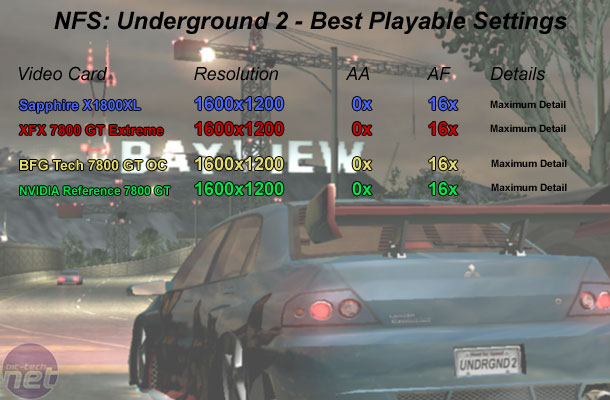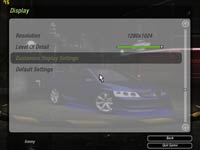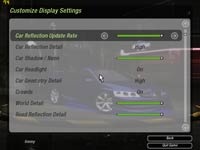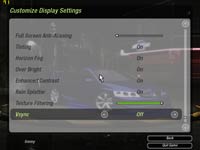NFS: Underground 2
Publisher: Electronic ArtsWe used Need For Speed: Underground 2 to represent a typical driving simulator - it's based on the DirectX 9.0 API, and makes use of many DirectX 9.0 features, including motion blur and light trails. Anti-Aliasing was controlled from inside the game, while Anisotropic Filtering was controlled via the driver control panel.
We used a 3-lap race on the "Parkade Track 1" Street-X circuit with three opponents for our manual run through. The circuit is fairly high-speed, but contains lots of corners, which makes good use of motion blur and light trails.
Below is a table of the best-playable settings that we found best for each video card configuration. In this title, we found that 28 to 30 frames per second minimum and a target of 38 frames per second (or higher) for the average frame rate delivered smooth and fluid game play.

The BFGTech 7800 GT OC was slightly faster than the X1800XL and reference 7800 GT, but not by a great deal. The same could really be said about the XFX GeForce 7800 GT Extreme too - the minimum frame rate was only two frames higher than the Sapphire X1800XL, while the average frame rate was a mere 4 frames higher. You'd be pushed to notice the difference between these cards in this title.

MSI MPG Velox 100R Chassis Review
October 14 2021 | 15:04











Want to comment? Please log in.